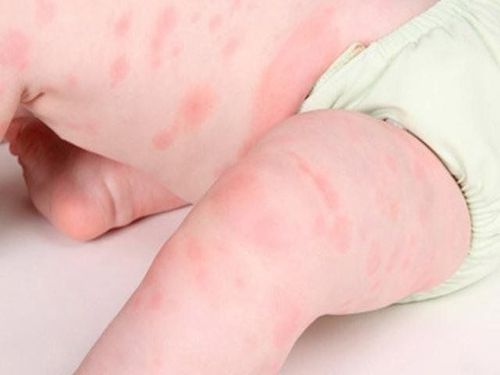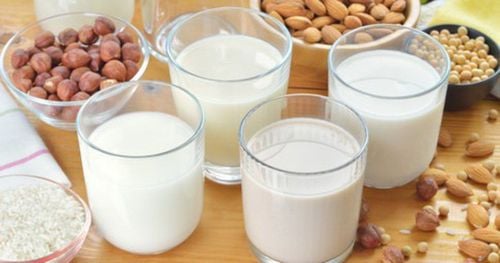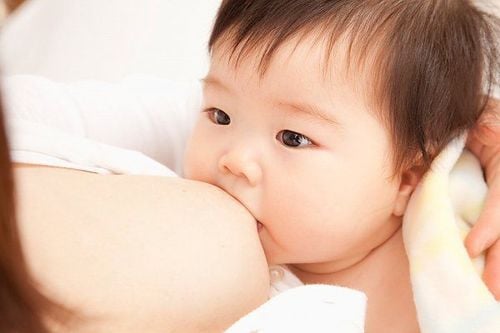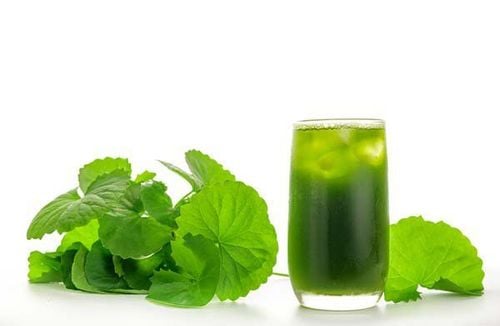This is an automatically translated article.
The article is expertly advised by MSc. Dr. Nguyen Minh Tuan - Pediatrician at the Department of Pediatrics - Neonatology - Vinmec Danang International General Hospital1. What is a food allergy?
1.1. Concept Food allergy is an abnormal reaction to food, caused by the body's immune system. Children with weak immune systems and intestinal tracts, high permeability of the gastrointestinal mucosa, if exposed to highly allergenic foods, are likely to develop allergies. Usually, food allergies cause skin manifestations such as erythema, dermatitis, urticaria, eczema, abdominal pain, and gastrointestinal disturbances. In some severe cases, food allergies can cause exacerbations of bronchial asthma or cause anaphylaxis, the risk of death is very high.Children under 1 year of age until they start eating solid foods are often the most susceptible to allergies because at this age their immune systems and digestive systems are not yet mature. Currently, the rate of food allergies is increasing around the world, especially in young children. Based on the parents' allergy history, it is possible to determine the child's risk of allergies while still in the womb. For example, if both parents have allergies, there is a 50-80% chance that their children will have them.

1.2. What foods are likely to cause allergies? Shrimp, fish, cow's milk, eggs, peanuts, soy are foods that can cause allergies. If in adults, it is common to be allergic to shrimp and fish, but for children, most of them are allergic to cow's milk, eggs and soy, which are allergenic foods. For children of breast-feeding age, many mothers, due to fear of lack of milk or working away from home, mix more infant formula for breast-feeding, leading to an allergic reaction to milk's ingredients. Allergic reactions to non-protein or low-protein foods are rare.
Food allergy is an allergy to food that enters the digestive tract, but the manifestations are mainly on the skin and the factors that cause the disease are located in the respiratory tract. Up to 80% of children with allergies have skin manifestations, 20% have respiratory symptoms (straining breathing, wheezing...), 20% have digestive system symptoms, and other symptoms. only a few percent. Food allergies, if not handled well, can lead to irreversible consequences.
2. Treatment
The principle of allergy treatment is to find out which allergens are the cause of allergies and avoid contact with those allergens. Sometimes it is necessary to change eating habits and be more careful in using food for children.
Eliminate allergenic foods from the diet.
When babies start to eat solids, they should start with healthy foods, with the lowest allergy rate for children, such as rice and tubers.
Avoid giving children industrially processed foods such as canned goods, bacon, salted pork, artificial colors and spices.
It is advisable to consult an allergist when you suspect that your child is allergic to a certain food. The doctor will examine, ask about the patient and may perform some specialized tests such as: Test the child's skin or do a blood test to determine with certainty the food to which the child is allergic. However, the accuracy of these tests is not high.
Therefore, you cannot rely solely on test results to decide on a diet for your child. Some tests are more accurate but less safe, such as the stimulus test with the suspect food itself. This test should be performed under the supervision of an allergist.
When it is known that the child is allergic to a certain food, it should be removed from the child's menu. Children's food should not be prepared or stored in utensils contaminated with foods to which the child is allergic.
However, food allergies do not last for a lifetime, so you do not need to force your child to abstain from any food for a long time. After a while, you can give the food again (except for those that cause an acute allergic reaction such as anaphylaxis).
When a food allergy is confirmed, treatment should be initiated as soon as possible with two primary measures:
Eliminate the allergenic foods from the child's diet. Use appropriate medications for allergies. The exclusion from the child's diet of allergenic foods is the most important measure to reduce the severity and prevent the recurrence of allergic reactions.
Some foods with cross-sensitivity to allergenic foods should also be excluded from the child's diet, such as: Goat's milk with cow's milk, beef (veal) and lamb are often cross-sensitized. In about 50 - 90% of cases, there is also a cross-sensitivity between fish and legumes.
In mild cases of allergies, reducing allergenic foods in the diet may be enough to minimize allergy symptoms, it is not necessary to eliminate these foods completely. However, it is still best to completely eliminate these foods.
For children who are allergic to milk, mothers should carefully read the ingredients of powdered milk or nutritional powder before using it for their children. Children who are allergic to cow's milk can usually safely use powdered milk or nutritional powder made from soy flour. If your baby is allergic to both cow's milk and soy powder, you should look for formulas with hydrolyzed nutritional ingredients. It is best to see a nutritionist for helpful advice on choosing milk for your baby.
Some cases of food allergies in children, especially those that appear early, children often decrease and gradually lose their sensitivity to food after a while due to the body's immune tolerance. body. In these cases, when the child is an adult, it is prudent to re-try foods that have caused an allergic reaction.
Note that in cases of late onset food allergies or allergies to certain foods such as: peanuts, shrimp, fish, this immune tolerance usually does not occur and should not be tried again. food that has caused an allergic reaction in these cases. Similarly, children who have experienced anaphylaxis from food should not try those foods again.
The exclusion of certain foods from the child's diet can lead to an imbalance of these diets and affect the development of the child, so it is best to consult the mother. By nutritionists to find a suitable diet for your child, the addition of vitamins and minerals may be essential.
Use of antiallergic drugs in the treatment of food allergies in children to reduce symptoms or prevent their occurrence when the child has a variety of food allergies or when food cannot be avoided. food allergies. However, the use of the drug must be prescribed by a pediatrician or a dermatologist and closely monitored.
3. Prevention of allergies in children
An allergy is a reaction when the body comes in contact with a foreign object or antigen. For babies in the first few days of life, foreign objects and foreign antigens are milk and food. For breastfed babies, it is not foreign antigens, only cow's milk and formula-fed babies are considered foreign antigens.Therefore, the first principle of allergen reduction in infants is oral tolerance: delay in allergen exposure during the first few months of life. At this stage, most of the allergens come from cow's milk formula. Formula-fed babies receive 106 times more foreign antigens than babies who are exclusively breastfed.
For the primary prevention of allergies, it can be divided into two subjects: all children and high-risk children.

3.1 For all babies Need to be exclusively breastfed for at least the first 4 months; Continue breastfeeding for up to 6 months; Avoid tobacco smoke completely, before and after birth... Breast milk plays an important role in preventing allergies, exclusive breastfeeding for at least 4 months to 6 months can help reduce the frequency of dermatitis. allergies in children under 2 years old; reduce the early onset of wheezing episodes in children under 4 years of age; reduce the frequency of cow's milk protein allergy in the first 2 years of life.
3.2 For high-risk infants, including those who are not breastfed, hydrolyzed milk should be given until 4 months of age. Partially hydrolyzed formula is preferred over actively (fully) hydrolyzed formula. Breastfeeding mothers should also limit foods that can cause allergies for their babies to make breast milk safe. Absolutely avoid foods that children are allergic to, especially children under 3 years old, this is the age when food allergies are highest. The combination of a diet with a nutritional supplement from a food supplement is a safe solution.
Even so, many children grow up to have intolerances to foods that caused allergies as children. This phenomenon often occurs with foods such as eggs, milk, soy. About 85% of children tolerate eggs and milk after 3 - 5 years, and about 50% of children get rid of allergic reactions by the age of 8 - 12 years. These children will continue to develop food allergies as they grow up. Therefore, it is necessary for children to gradually get used to these foods at school age to quickly return them to a balanced and varied diet.
Because food allergies in children have a lot to do with genetics, families with a family member with allergies or allergies, the child will have a higher risk of one or more related diseases. associated with allergies such as allergic rhinitis, allergic asthma, eczema and food allergies. In this situation, during pregnancy, mothers should not eat a lot of peanuts and soybeans to limit the possibility of allergies for children of breast-feeding age.
Please dial HOTLINE for more information or register for an appointment HERE. Download MyVinmec app to make appointments faster and to manage your bookings easily.
Article referenced source: National Institute of Nutrition













